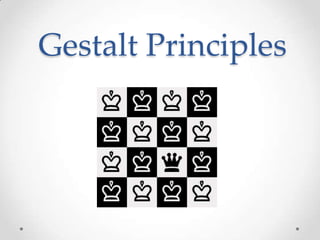Visual perception images (organisation & interpretation)
- 2. Nelson Psychology VCE Units 1 & 2: Teacher Resource CD 9780170185202 ? Cengage Learning Australia 2009
- 3. Nelson Psychology VCE Units 1 & 2: Teacher Resource CD 9780170185202 ? Cengage Learning Australia 2009
- 4. Nelson Psychology VCE Units 1 & 2: Teacher Resource CD 9780170185202 ? Cengage Learning Australia 2009
- 5. Nelson Psychology VCE Units 1 & 2: Teacher Resource CD 9780170185202 ? Cengage Learning Australia 2009
- 20. Nelson Psychology VCE Units 1 & 2: Teacher Resource CD 9780170185202 ? Cengage Learning Australia 2009
- 21. Nelson Psychology VCE Units 1 & 2: Teacher Resource CD 9780170185202 ? Cengage Learning Australia 2009
- 22. Depth Perception
- 23. Nelson Psychology VCE Units 1 & 2: Teacher Resource CD 9780170185202 ? Cengage Learning Australia 2009
- 24. Nelson Psychology VCE Units 1 & 2: Teacher Resource CD 9780170185202 ? Cengage Learning Australia 2009
- 25. Nelson Psychology VCE Units 1 & 2: Teacher Resource CD 9780170185202 ? Cengage Learning Australia 2009
- 26. Nelson Psychology VCE Units 1 & 2: Teacher Resource CD 9780170185202 ? Cengage Learning Australia 2009
- 27. Nelson Psychology VCE Units 1 & 2: Teacher Resource CD 9780170185202 ? Cengage Learning Australia 2009
- 35. Visual Illusions
- 36. Nelson Psychology VCE Units 1 & 2: Teacher Resource CD 9780170185202 ? Cengage Learning Australia 2009
- 37. Nelson Psychology VCE Units 1 & 2: Teacher Resource CD 9780170185202 ? Cengage Learning Australia 2009
- 38. Nelson Psychology VCE Units 1 & 2: Teacher Resource CD 9780170185202 ? Cengage Learning Australia 2009
- 39. Nelson Psychology VCE Units 1 & 2: Teacher Resource CD 9780170185202 ? Cengage Learning Australia 2009
- 40. Nelson Psychology VCE Units 1 & 2: Teacher Resource CD 9780170185202 ? Cengage Learning Australia 2009
- 41. Nelson Psychology VCE Units 1 & 2: Teacher Resource CD 9780170185202 ? Cengage Learning Australia 2009
- 42. Nelson Psychology VCE Units 1 & 2: Teacher Resource CD 9780170185202 ? Cengage Learning Australia 2009
- 43. Nelson Psychology VCE Units 1 & 2: Teacher Resource CD 9780170185202 ? Cengage Learning Australia 2009
- 44. Nelson Psychology VCE Units 1 & 2: Teacher Resource CD 9780170185202 ? Cengage Learning Australia 2009
- 45. Nelson Psychology VCE Units 1 & 2: Teacher Resource CD 9780170185202 ? Cengage Learning Australia 2009
- 46. Nelson Psychology VCE Units 1 & 2: Teacher Resource CD 9780170185202 ? Cengage Learning Australia 2009
Editor's Notes
- #3: Figure-groundWe see these objects as figures against the background.
- #4: ClosureHere, gaps are closed to make a complete figure.
- #5: SimilarityIn these examples, organisation depends on similarity of colour and/or shape.
- #6: ProximityNotice how differently a group of six or nine objects can be perceptually organised, depending on their spacing.
- #21: Figure 3.24 a Are the centre dots in both figures the same size? b Context alters the meaning of the middle. (Adapted from Bruner & Minturn, 1955)
- #22: Figure 3.24 a Are the centre dots in both figures the same size? b Context alters the meaning of the middle. (Adapted from Bruner & Minturn, 1955)
- #24: Figure 3.16 Pictorial cue:Linear perspective
- #25: Figure 3.16 Pictorial cue: Relative size
- #26: Figure 3.16 Pictorial cue: Interposition
- #27: Figure 3.16 Pictorial cue: Texture gradient
- #28: Figure 3.16 Pictorial cue: Height in visual field
- #37: Figure 3.21 Necker¡¯s cube.
- #38: Visual illusion 1: Is the diagonal a straight line? Check it with a ruler.
- #39: Visual illusion 2:Is this a drawing of a staircase descending from upper left to lower right, or is it a view from under a staircase from lower right to upper left?
- #40: Visual illusion 3:Are these lines parallel? Cover some of the slash marks to see.
- #41: Visual illusion 4:Which line is larger: the horizontal or the vertical line?
- #42: Visual illusion 5:Notice how the background distorts the square.
- #43: Visual illusion 6:Which shape is larger?
- #44: Visual illusion 7:Which column is shortest? Which is longest?
- #45: Figure 3.29 The M¨¹ller-Lyer illusion. Which of the horizontal lines is the longer?
- #46: Figure 3.31 The Ames room. From the front, as shown in a and b, the room looks normal; the actual right-hand corner is very short and the left-hand corner is very tall. The diagram in c shows the shape of the room and reveals why people appear to ¡®grow¡¯ as they cross towards the nearer, shorter right-hand corner. The floor plan in d shows people¡¯s actual positions in the Ames room in relation to the viewer.
- #47: Figure 3.31 The Ames room. From the front, as shown in a and b, the room looks normal; the actual right-hand corner is very short and the left-hand corner is very tall. The diagram in c shows the shape of the room and reveals why people appear to ¡®grow¡¯ as they cross towards the nearer, shorter right-hand corner. The floor plan in d shows people¡¯s actual positions in the Ames room in relation to the viewer.













































